The Logitech G910 Orion Spectrum Mechanical Keyboard Review
by E. Fylladitakis on October 6, 2016 8:30 AM EST- Posted in
- Peripherals
- Logitech
- Mechanical Keyboards
- RGB
- Omron
The Logitech G910 Orion Spectrum Mechanical Gaming Keyboard
In terms of aesthetics, the G910 Orion Spectrum is based on a modern design, with futuristic curves and rounded cutouts. Considering its purpose and target market, we feel that it has an excellent balance between elegance and extravagance. However, the excessive use of plastic is not going to be very pleasing for those seeking a premium look, especially when most top-tier keyboards are metallic nowadays. Nevertheless, the plastics of the G910 Orion Spectrum are of excellent quality and thus metal would only offer an aesthetic advantage.
We received the US/International version of the keyboard, or at least that is what the box said. The layout of the actual keyboard however was different, looking like a mix of an ISO 105 key layout with ANSI keycaps. As ISO layout has one key more than ANSI; one keycap repeats itself next to the Enter and to the left Shift key. Though it should be noted that on Logitech's website, the default model shown is a full 104-key ANSI layout, so it appears that regardless of the product labeling, they are producing both ISO and ANSI versions.
One of the major upgrades in comparison to G910 Orion Spark are the new keycaps. On the Spark, the keycaps received numerous complaints for having peculiar keycaps with sharply rising edges. The keycaps of the G910 Orion Spectrum on the other hand are cylindrical, and they are made from ABS plastic and have bold characters printed right in the middle. The extra G keys and eight of the main keys (WASD and the arrow keys) have a pattern printed on them but they still are cylindrical like every other key. Do note however that the company does not supply normal replacements for the WASD and arrow keys, so users will be stuck with them visually standing out regardless whether it is convenient for them or not.
The Logitech G910 Orion Spectrum has nine extra programmable keys for macros and advanced functions. Five are placed vertically to the left side of the keyboard and four are right above the F1 to F4 keys. Four smaller buttons for quick mode changing and macro recording can be found at the top left corner of the keyboard. A subtle illuminated logo can be seen at the top left corner of the keyboard, between the left macro keys and the mode buttons.
Moving on, low profile, rectangular buttons and a plastic wide wheel have been installed for basic multimedia control. The wheel naturally controls the volume and a rectangular flat button next to it mutes the volume. Four rounded rectangular buttons above the volume control wheel provide basic media functions, with the Play/Pause key having a flattened top for tactile feedback. There are two more rectangular buttons towards the center of the keyboard, one for turning on or off the lighting and one for entering the “game mode” that locks certain keys (by default, the Windows keys only). The lighting button has no brightness settings; it only turns the lighting entirely off. Brightness and effects are only programmable via the company’s software.
There are no USB pass-through ports on the G910 Orion Spectrum. Only a normal, unbraided cable exits from the right side of the keyboard. Logitech probably felt that the braided cable would not visually match the glossy plastics of the keyboard. The blue plastic tray at the back of the keyboard is one of its most advertised features - the ARX dock.
When pulled out, the ARX dock functions as a holder for virtually any smartphone or tablet. The word “dock” is probably a little misleading, as the touchscreen device will not actually connect with the keyboard directly but wirelessly, via Logitech’s software and Android/iOS application. The blue plastic is actually nothing more than a holder.
Smartphones with 5” to 5.5” screens are an excellent fit (the 5” Lenovo Vibe Shot Z90 is being used in our pictures as a reference). It would be nice if Logitech had considered the ability to at least charge the device - as its battery drain from having its screen constantly on will be humongous - though admittedly an effective universal charging solution would likely be more trouble than it's worth.
The palm rest is another part that Logitech decided to change on the G910 Orion Spectrum, as the uneven palm rest of the G910 Orion Spark had received much negative feedback for various reasons. Although the supports beneath the palm rest remain the same, the company designed a straight palm rest for it that ought to be comfortable for gamers and professionals alike. It still is not possible to remove the palm rest completely, as the plastic supports beneath it are part of the keyboard’s main frame.
Strangely, Logitech made a real effort to make the bottom of the keyboard aesthetically appealing. They placed large polygonal anti-skid pads at the lower edges of the keyboard, as well as a large tetrahedral pads at the middle-top. Smaller rectangular pads can be seen at the top edges of the keyboard, next to the wide feet. The embossed plastic bottom is forming futuristic geometric shapes that serve no practical function, only aesthetics.
The mechanical switches of the G910 Orion Spectrum are Logitech’s exclusive Romer-G switches. These are made by Omron and Logitech has designed them specifically with gaming in mind. They are tactile, quiet and have an actuation force of 45g. Some compare them with Cherry’s MX Brown switches, but that is highly inaccurate, as the Romer-G switch has a much softer tactile bump and much shorter travel and actuation distances, at 3 mm and 1.5 mm respectively. The LED are installed at the center of the switch, providing excellent lighting to the inside of the keycap and minimizing light leakage around it. Cherry MX cross-type supports have been installed beneath the larger keys. The Romer-G switches however are entirely incompatible with keycaps that have been designed for keyboards with Cherry MX or compatible switches. Practically, the only source for keycaps compatible with the Romer-G switch currently is Logitech.
The removal of the top plastic cover reveals the metallic plate that is responsible for the keyboard’s high mechanical strength. The switches are permanently attached to the plate and soldered to the PCB below. Membrane electronic contacts are being used for the smaller buttons. Logitech’s assembly quality is excellent, with no flaws or weak spots that we could identify.
Most enthusiasts would be amazed to find out that the heart of the Logitech’s flagship is a low-cost ARM processor from ST Microelectronics. The STM32L100-R8T6 is a low power, low frequency 32MHz RISC CPU with 64Kb of flash memory. It might seem to be very weak compared to what the competition is using but it actually is more than enough for the G910 Orion Spectrum, as the keyboard actually is not fully programmable. As we will also see in the following pages, only the extra G keys of the keyboard are programmable.


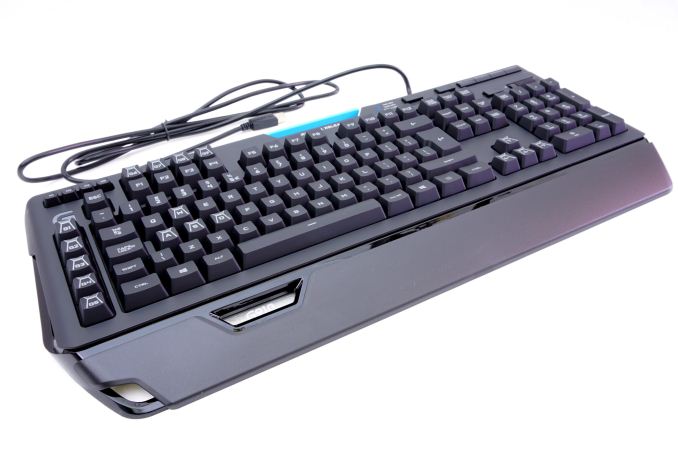
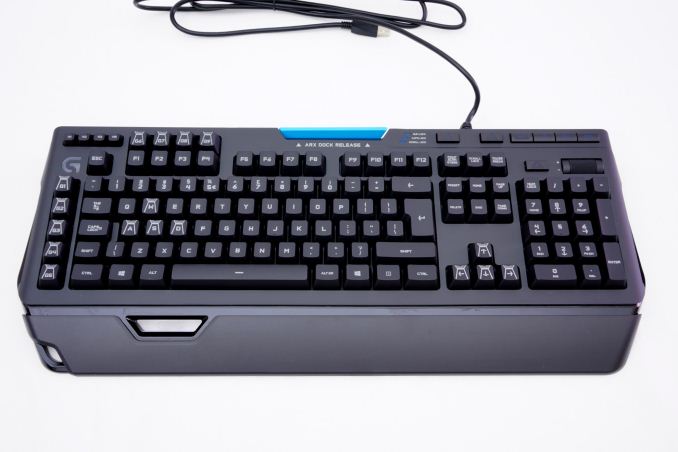
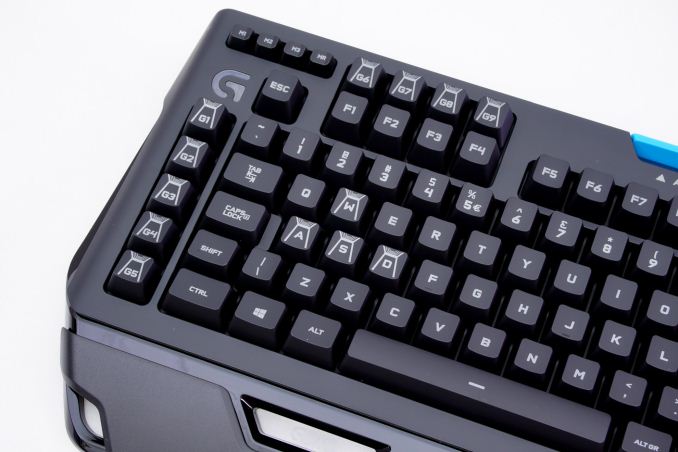
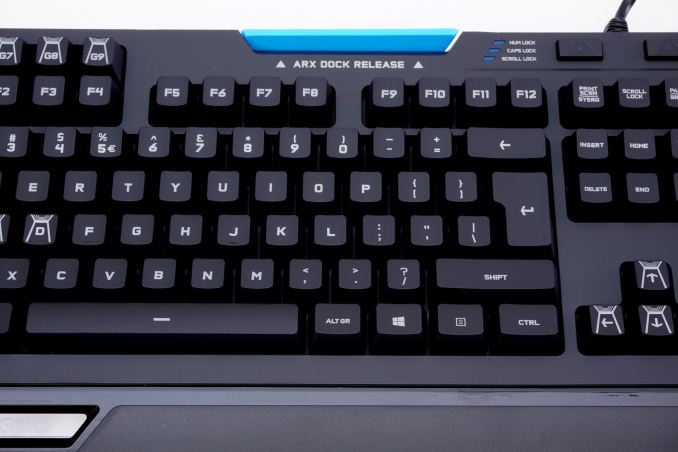
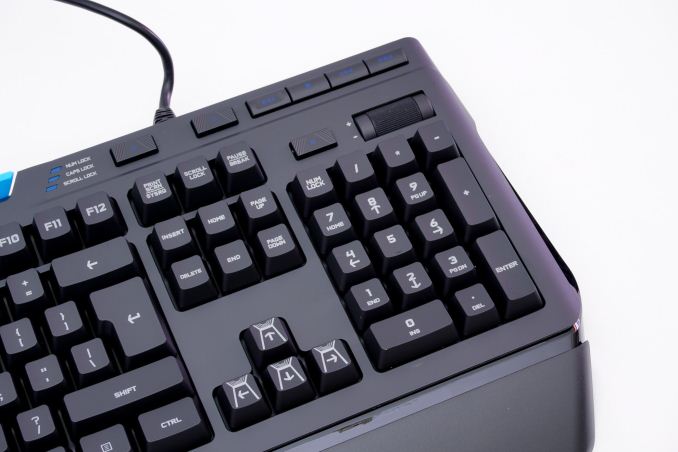
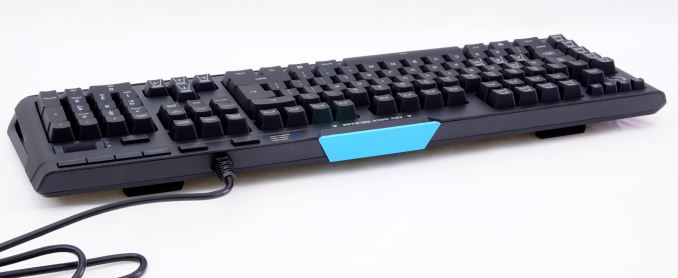
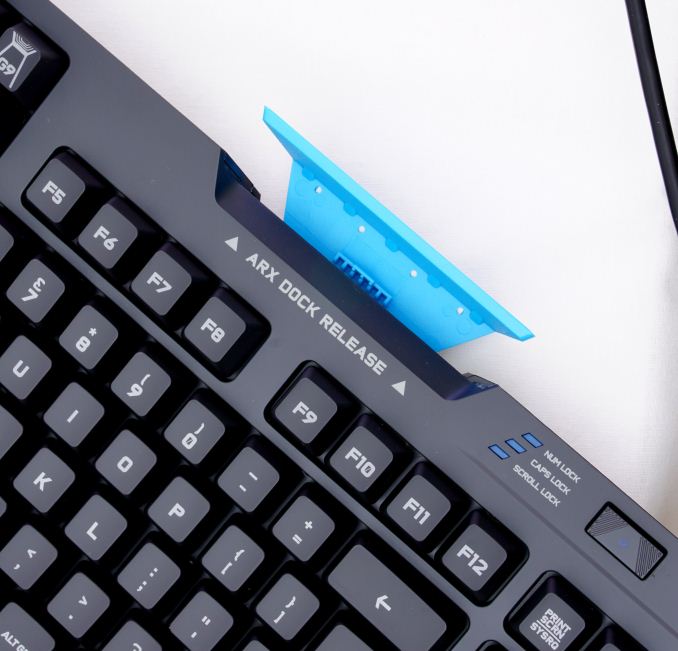
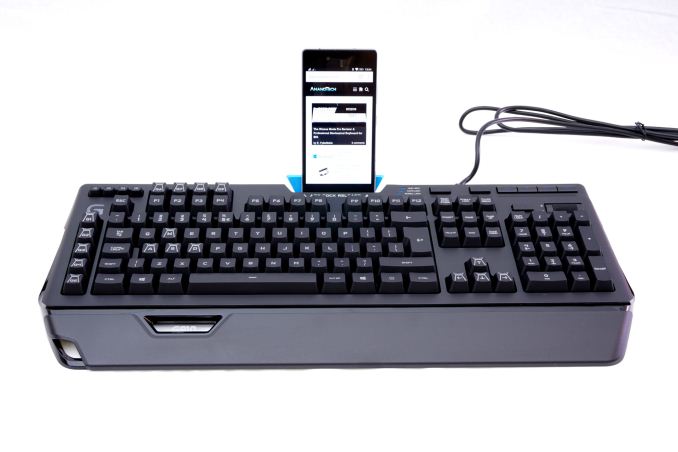
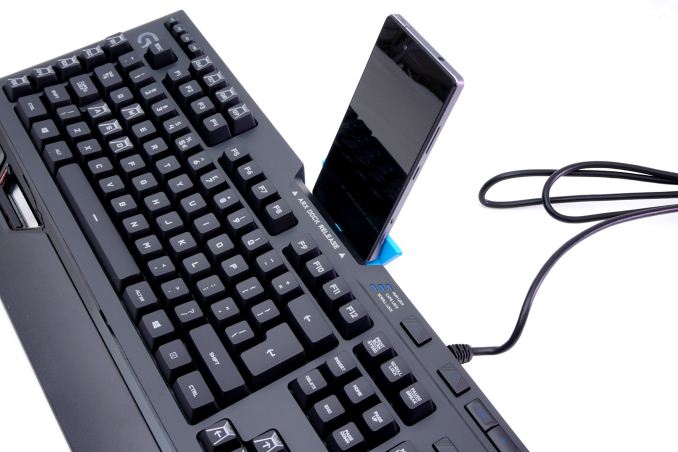
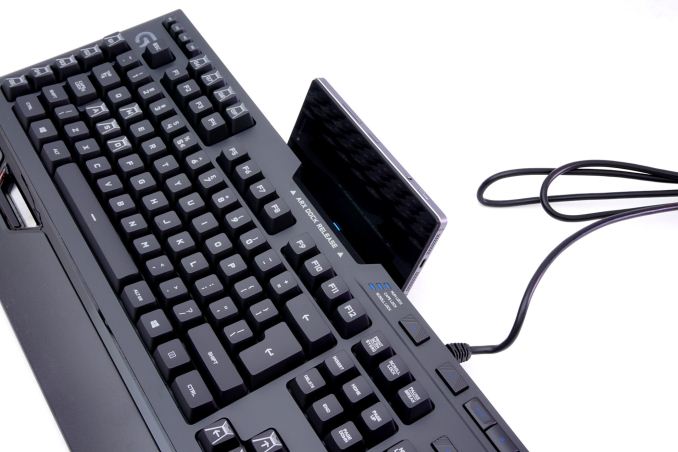
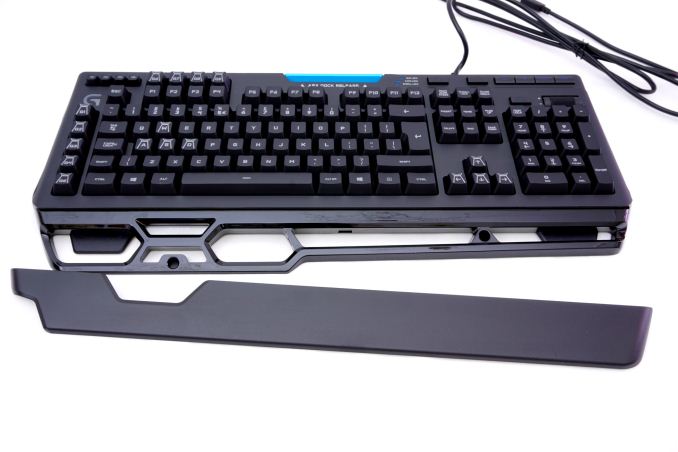
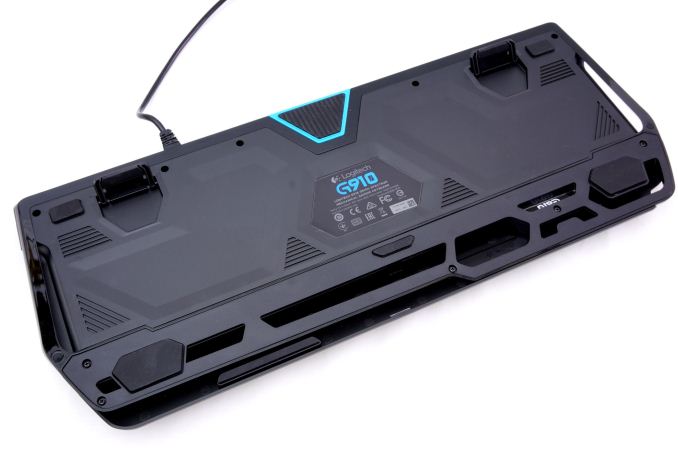

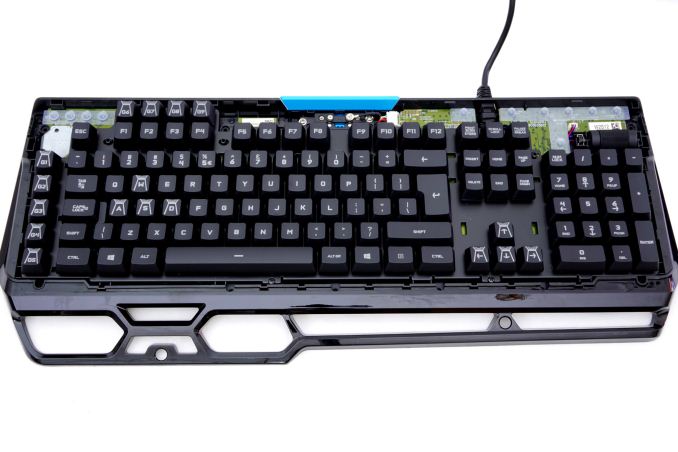
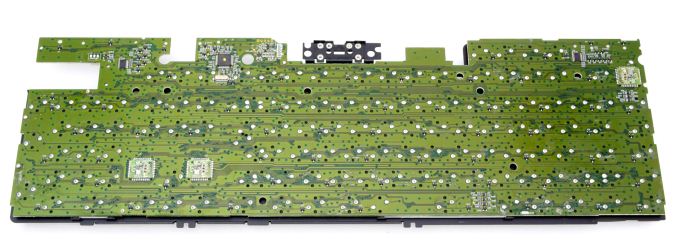
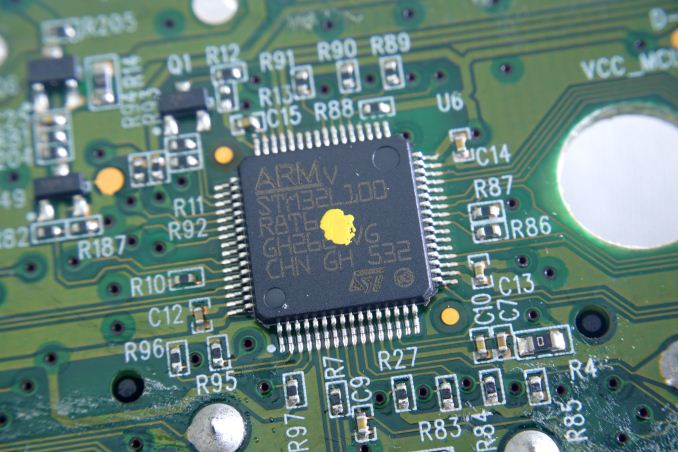
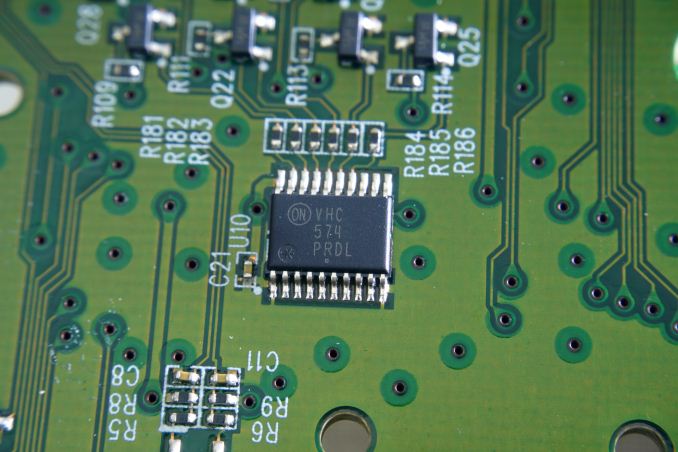








43 Comments
View All Comments
Footman36 - Thursday, October 6, 2016 - link
I have many mechanical keyboards and these Romer G switches are by far the best mechanical switches I have used. They are quiet, fast and reliable. I am not so sure about the actual design of the Logitech keyboards themselves, the wrist support is lousy and the keyboards are asymmetrical (looking at you G410). If you can overlook the actual design then the key stroke and switches are close to perfect for me. I have a bunch of Corsair and Coolermaster keyboards sitting in my storeroom that I did not care for.qlum - Thursday, October 6, 2016 - link
interesting that they send the us international layout considering its really only commonly used in the netherlands. Even here a lot of manufacturers don't produce specific us international keyboardsVayra - Friday, October 7, 2016 - link
I'm not a huge fan of the Romer G switches, but then I really like to have a bit more tactile feedback and more travel.R7 - Thursday, October 6, 2016 - link
"The limited programmability however is disappointing considering the target group of the keyboard, with only the nine G keys being programmable on the entire keyboard"Thats not entirely correct. The macro switch keys (M1, M2 & M3) allow switching between sets of 9. So actually it's 3*9=27
I currently own the first Orion Spark version and to be honest i see no reason to upgrade. For those concerned with keycap shape you can also buy cylindrical kaps for Spark: http://gaming.logitech.com/en-us/product/romer-g-k...
Plus (atleast where i live) the Spectrum version is actually more expensive than the Spark version. Problably because Spectrum is a "new" product.
The only major downside i've found on the Spark is the LED color issue where (at least to my eyes) the white and yellow colors are not quite what they should be. Yellow appears more greenish and white appears as a pale blue. Aside from that - no complaints here.
BurntMyBacon - Friday, October 7, 2016 - link
@R7: "The only major downside i've found on the Spark is the LED color issue where (at least to my eyes) the white and yellow colors are not quite what they should be. Yellow appears more greenish and white appears as a pale blue. Aside from that - no complaints here."I've found that you can compensate the white issue by setting the color in Setpoint to a very light red. My whites were a very pale cyan, though. If you are pale blue, you may need a light yellow. Your yellow setting shouldn't have any blue in it, though, so it sounds like your red LEDs are relatively week. You could probably get a better yellow by setting it slightly orange.
NeonFlak - Thursday, October 6, 2016 - link
Is it just me, or does the keyboard graphic on the box not show the actual product? Look at the enter keys.Ryan Smith - Friday, October 7, 2016 - link
Our best guess is that Logitech is making both ANSI and ISO layout boards, but only using ANSI for the box art.Houdani - Friday, October 7, 2016 - link
If I opened the box and found an ISO layout for the [enter] and [backslash], I would immediately box it up and send it away. Begone!SteelRing - Friday, October 7, 2016 - link
Yep, that Enter key with a tiny backslash is an automatic deal killer for me.... i would not care one bit what kind of key or switch or whatever..... trash it is.bearxor - Thursday, October 6, 2016 - link
I have been using the Orion Spark for some time and I do like it. There's one thing missing here in the gaming software set that I don't think the reviewer had time to really experience but that I loved.I don't know how many profiles the software will detect but it will pick up whatever game you're not playing and customize the lighting on the keyboard to match.
For instance, I'll just be using Windows and the keyboard will be totally backlit. But if I fire up The Division, the software will recognize it and customize the lighting to match the game turning off the keys not needed.
It even goes a further step by detecting if you even need the key you'd normally use during the game. For instance, the G key is for a grenade. It lights up like normal but if you use up all of your grenades the key will turn off. When you pick up more the key will turn itself back on.
Really cool.